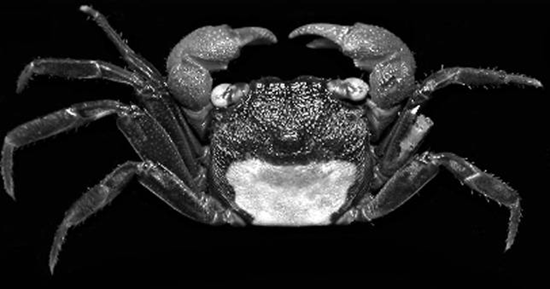
8 vampire animals that aren't necessarily bloodsuckers
By Jaymi Heimbuch, Mother Nature Network, 15 May 2015.
By Jaymi Heimbuch, Mother Nature Network, 15 May 2015.
We humans have an interesting habit of superimposing mythological creatures over real creatures just to spice things up. In truth, it does make the world feel more interesting and full of mystery. Yet, while we've added a layer of vampiric goodness over the following creatures, they really don't need much help being weird. Whether the name comes down to interesting eating habits or just plain odd looks, these eight species have an edge when it comes to being dark and creepy.
1. Vampire squirrel
This is about as strange a squirrel as you're going to find. Found in the forested hills of Borneo, this squirrel is known for two things. First, it has the world’s fluffiest tail. That’s not an exaggeration; it's an official title. The tail is 30 percent larger than the volume of the squirrel’s body. Researchers speculate that perhaps the overly fluffy tail has to do with escaping predators by providing mostly just hair, rather than body, as a target. But while that alone is neat, it’s a second claim to fame that is the source of the squirrel’s name.
Photo: D. Augeri/Taprobanica
Local legend has it that these squirrels will sit on the low branch of a tree waiting for a deer to pass by, at which they will take a flying leap to the jugular and slice it open, eviscerating the deer to eat the internal organs. While it's difficult to believe that a squirrel could be such a ferocious hunter and take down prey many times its size, it nevertheless is a legend that clings to the species. The above camera trap photos of glowing-eyed specimens don't do much to minimize the creepiness either.
2. Vampire squid
The scientific name for this species is Vampyroteuthis infernalis, meaning the vampire squid from Hell. But most folks affectionately call it vampire squid for short. This squid is so unique that it was put in its own order, Vampyromorpha, and it is the only squid species to live in the oxygen minimum layer of the ocean. Where most squid species can live in oxygen levels below 50 percent, with some species living in levels as low as 20 percent, the vampire squid lives in levels as low as 5 percent. And yet, that’s not the most extraordinary thing about this species - not by a long shot.
The black (or sometimes purplish or reddish depending on the light) squid has red eyes and the ability to use bioluminescence to avoid predators and attract prey. Not only does it have light-producing organs called photophores on its body to confuse predators, but it can also eject a cloud of bioluminescent mucus from the tips of its arms when threatened, giving it a chance to escape into the dark of the surrounding water. Everything about this squid is fascinating, and you definitely want to take a moment to watch it in action in the above video.
3. Vampire flying frog
The vampire flying frog sounds a lot more fantastic than it actually is. Rather than a fierce fanged flying frog ready to feast on blood, the vampire flying frog is kind of simple really, perhaps even a bit boring.
It's a small brown frog that has extra webbing between its toes to help it glide during leaps to cover more distance. What's not boring is the species in its tadpole form. Rather than the beak-like mouth of most tadpoles, the tadpole of the vampire flying frog has big, sharp black fangs. Why? That’s the weirdest part.
There isn’t food available in the little pools of water in which the tadpoles grow up. As a solution, the female frog lays unfertilized eggs to serve as food. The tadpoles use the fangs to cut through the mucus surrounding the yolk and then swallow down the meal. This is the only tadpole known to have such an adaptation. It's practical, yet amazing.
4. Vampire crabs
Photo: Oliver Mengedoht from Ng et al., 2015, Raffles Bulletin of Zoology.
Two species of vampire crab are named after their coloration - dark bodies, purple or red claws and strikingly yellow eyes. Basically, the classic colour scheme of a cartoon vampire.
What makes these species stand out is that they were popular in the pet trade well before they were described by science. In fact, researchers looking into the species didn’t know for sure where they came from, as dealers claimed they were from various locations in Indonesia. They had to do some sleuth work to track down collectors and discover just where to look. Turns out, they are from central Java. Now that the mystery of their native habitat is solved, the researchers realize that the species could potentially be in danger of over-collection and loss of healthy habitat.
5. Dracula minnow
Photo: Khor Harn Sheng via Arkive
The Danionella dracula is a miniscule fish of the not-exactly-terrifying variety. Still, when you get a really close look at its jaw structure, you see why it is called the Dracula minnow. The species is a tiny 1.7 centimetre fish that evolved away from having teeth around 50 million years ago. But then around 30 million years ago, decided to evolve to have bone “fangs” as part of its jaw structure. Only the males have these tooth-like structures. Though perhaps scary looking close up (like under a microscope close), think of these fish as baby Draculas, because even as an adult, they retain a larval-like body, with around 40 fewer bones than their close relatives the zebrafish.
6. Vampire tetra
You may be feeling underwhelmed by the unviewable-without-a-microscope vampire fangs of the Dracula minnow, so we're bringing you something a bit more impressive. Meet Hydrolycus scomberoides.
The vampire tetra is also known as the payara or the saber-tooth barracuda, and it's found in Venezuela. The fish will certainly grab your attention, since it can grow to be around 15 inches long, with fangs you'll definitely notice. It apparently uses these to skewer fish before swallowing them. In the above video, one small tetra shows off its pearly whites.
7. Vampire moth
If you thought you only had to worry about mosquitoes when it comes to blood-sucking insects, you have another winged vampire to deal with. It turns out there's a species of moth that doesn’t mind drilling into the skin of mammals and sucking blood.
Calyptra thalictri is a species of moth widespread in central and southern Europe and is known to feed only on fruit. But researchers found a Russian population that uses their barb-lined tongues to drill through the skin of mammals (even buffalo!) to suck blood. When the researchers exposed them to humans as their only source of food, males happily drilled away for a snack. Researchers think the males feed on the blood to provide salt to females during mating, which then provides better nutrition to the larvae. It is thought that these moths could be on an “evolutionary trajectory” away from the fruit-only diet of the rest of the species.
Despite the rather creepy ability to drink human blood, a bite causes nothing more than a red spot that is sore for a few hours.
8. Dracula ant
There is a genus of ants endemic to Madagascar that includes a curious genus called Amblyoponini, of which the Dracula ants species are a part.
So why are they called Dracula ants? Well, check out this quote from Live Science: “The ancient Dracula lineage diverged from their ant ancestors before the advent of food-sharing behaviour and the ability to regurgitate food. Instead, they poke holes in the abdomen of their larvae to suck on the blood of their sisters.”
It’s actually not blood, but hemolymph, the ant version of blood, but you get the drift. Really, it’s not as awful as it sounds. It is a behaviour called “non-destructive cannibalism,” which means the larvae aren’t killed. They just get a bit scarred up. That is unless the colony is starving. Then the most scarred and drained larvae are simply eaten. (At least the ants are practical about who becomes lunch.)
According to Arkive, “Unlike most ants, these orange coloured ants have abdomens that closely resemble those of wasps, from which ants are believed to have descended some 70 to 80 million years ago. Thus, they have been described as a possible ‘missing link’ in ant evolution.”
Though they could be a lost link in the ant evolutionary chain, researchers are concerned they could disappear within the next decade due to habitat destruction and other human-caused changes. But don’t lose hope. Six new species were recently discovered in Madagascar.
Related on Mother Nature Network:
Top image: The newly discovered "vampire crab" species Geosesarma dennerle. Credit: Raffles Bulletin of Zoology.
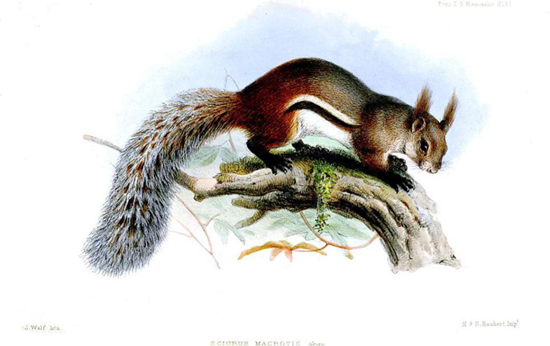
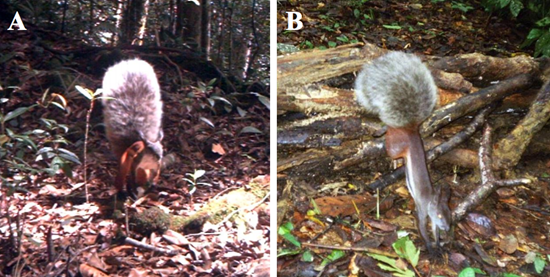
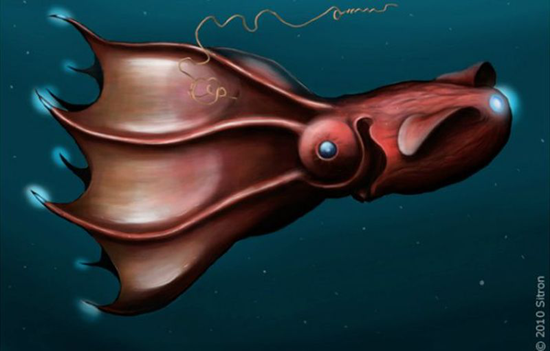


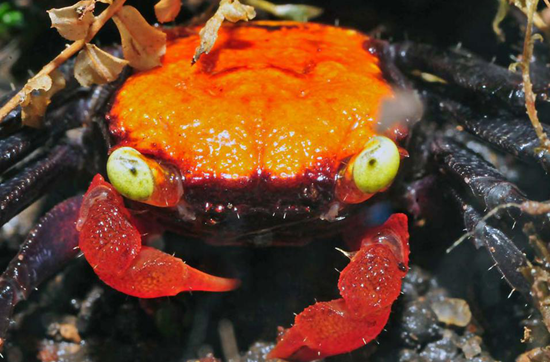
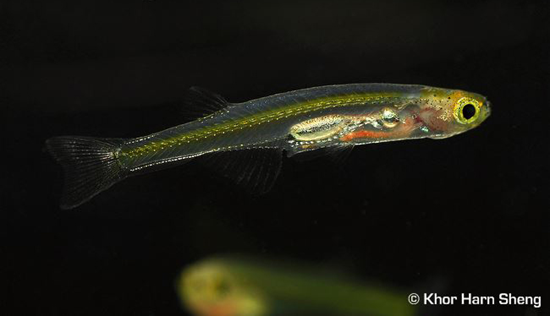


No comments:
Post a Comment
Please adhere to proper blog etiquette when posting your comments. This blog owner will exercise his absolution discretion in allowing or rejecting any comments that are deemed seditious, defamatory, libelous, racist, vulgar, insulting, and other remarks that exhibit similar characteristics. If you insist on using anonymous comments, please write your name or other IDs at the end of your message.